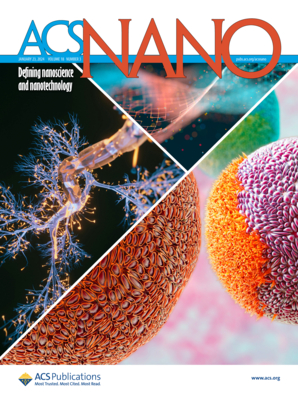Potassium-Doped MnO2 Nanoparticles Reprogram Neutrophil Calcium Signaling to Accelerate Healing of Methicillin-Resistant Staphylococcus aureus-Infected Diabetic Wounds
IF 15.8
1区 材料科学
Q1 CHEMISTRY, MULTIDISCIPLINARY
引用次数: 0
Abstract
Neutrophils, as first-line immune cells, typically lose their edge within the diabetic wounds accompanied by methicillin-resistant Staphylococcus aureus (MRSA) infections (the D/M setting), playing the role of “more foe than friend” during the healing process. Specifically, reduced influx of calcium ions (Ca2+) and impaired calcium homeostasis yield the dysfunction of neutrophil sequential behaviors in pathogen killing and wound healing, manifesting as suppressed chemotaxis, decreased intracellular reactive oxygen species (ROS) generation, prolonged apoptosis, and retention of neutrophil extracellular traps (NETs). To address this challenge, this study fabricated potassium (K)-doped manganese dioxide nanoparticles (MnO2 NPs), which activated transmembrane Ca2+ channels by inducing neutrophil depolarization via electron transfer. Subsequently, this contributed to the initial Ca2+ influx and reprogrammed Ca2+-dependent behaviors of impaired neutrophils. Also, the potential antimicrobial capacity of K-MnO2 NPs created a favorable extracellular environment that restored calcium homeostasis, enabling apoptotic neutrophils to be removed timely. Therefore, the wounds treated with K-MnO2 NPs in the D/M setting exhibited potent resistance to MRSA and rapid healing, which could be attributed to the synergistic effects of K-MnO2 NPs in leveraging Ca2+ influx and maintaining calcium homeostasis. In brief, K-MnO2 NPs constitute an effective strategy to resist MRSA and rapid wound healing in the D/M setting.

求助全文
约1分钟内获得全文
求助全文
来源期刊

ACS Nano
工程技术-材料科学:综合
CiteScore
26.00
自引率
4.10%
发文量
1627
审稿时长
1.7 months
期刊介绍:
ACS Nano, published monthly, serves as an international forum for comprehensive articles on nanoscience and nanotechnology research at the intersections of chemistry, biology, materials science, physics, and engineering. The journal fosters communication among scientists in these communities, facilitating collaboration, new research opportunities, and advancements through discoveries. ACS Nano covers synthesis, assembly, characterization, theory, and simulation of nanostructures, nanobiotechnology, nanofabrication, methods and tools for nanoscience and nanotechnology, and self- and directed-assembly. Alongside original research articles, it offers thorough reviews, perspectives on cutting-edge research, and discussions envisioning the future of nanoscience and nanotechnology.
 求助内容:
求助内容: 应助结果提醒方式:
应助结果提醒方式:


